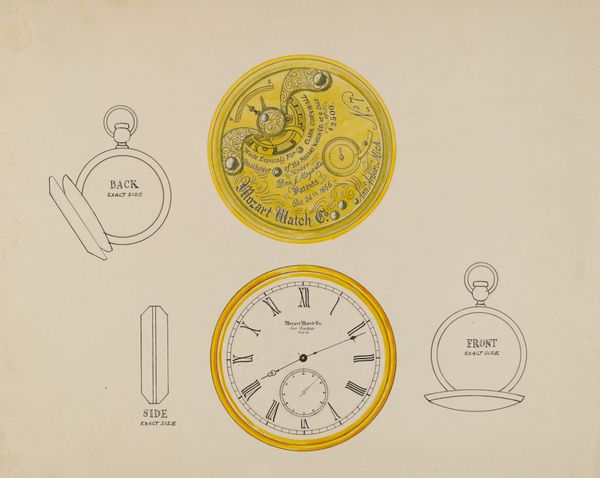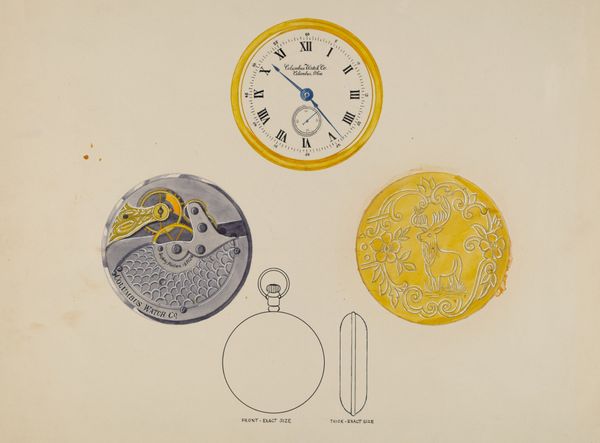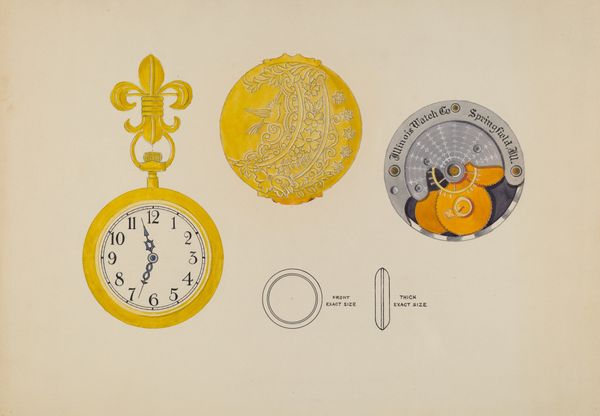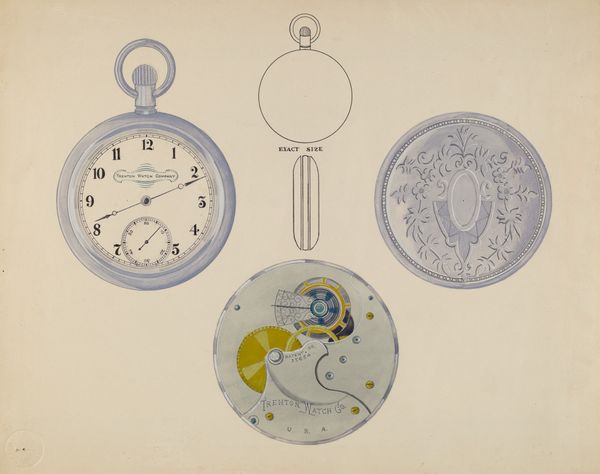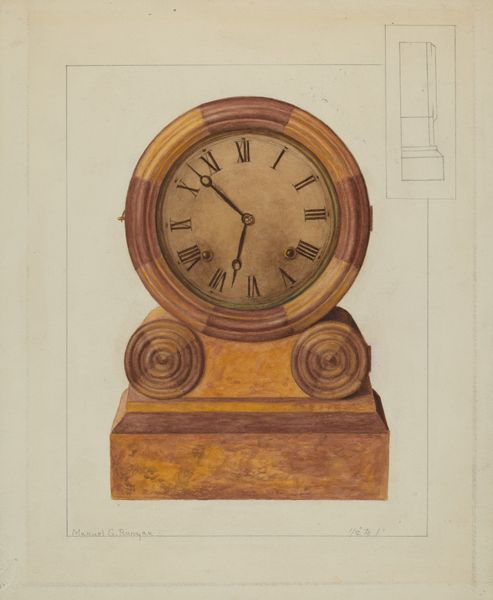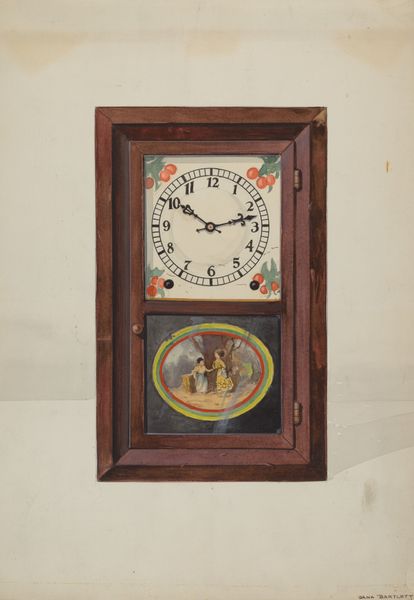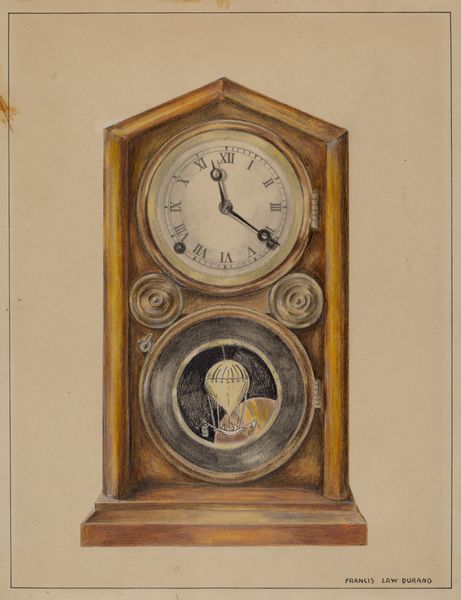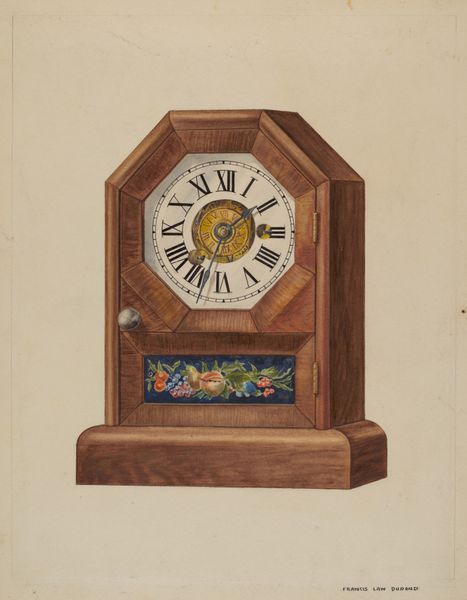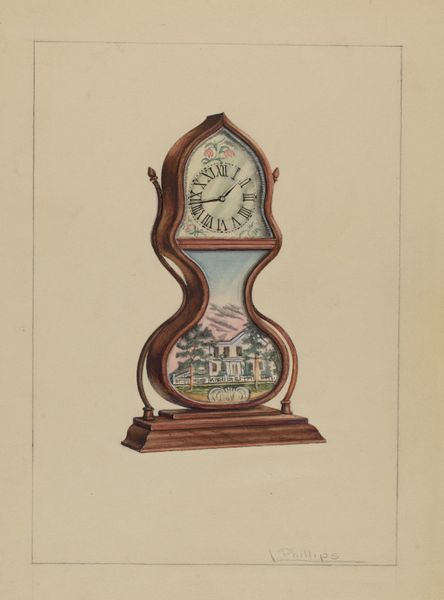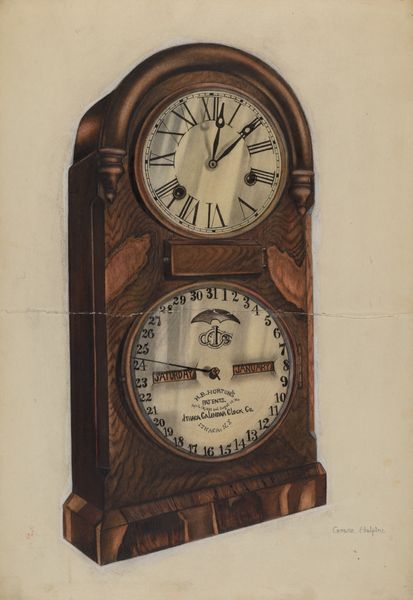
drawing, watercolor
#
drawing
#
water colours
#
watercolor
#
watercolor
Dimensions: overall: 24.8 x 30.3 cm (9 3/4 x 11 15/16 in.)
Copyright: National Gallery of Art: CC0 1.0
Curator: I find this watercolor drawing titled "Watch Case" from around 1936 quite charming. Editor: Indeed! There's an immediate warmth radiating from the abundant use of yellow ochre and the whimsical depiction of the train. It feels quite nostalgic. Curator: Let’s examine the composition. Notice how the artist, Harry G. Aberdeen, meticulously renders four different perspectives of the pocket watch. Each view is sharply defined, revealing distinct facets of its design. Editor: Absolutely. This was created around the Great Depression era; watches were essential tools for coordinating logistics and railroads, embodying industry. The artistry engraved into these casings also mirrored aspirations and symbolized status. Curator: Focus on the circular format echoed throughout. The roundness appears in the watch face, case, and the sun motif embellishing the train imagery. Even the soft gradations of color contribute to its visual coherence. What about the use of space here, in semiotic terms? Editor: Semiotically, I would agree that this circular design represents the unending rhythm of time. As technology advanced and industrialized culture was quickly established, it seems a pocket watch, at the time, signaled regularity. Curator: In that respect, then the steam train points toward a broader, rapid advancement into an age of transportation, while also reflecting optimism of new possibility during that tumultuous period. Editor: And what I find compelling here is that even seemingly mundane objects such as a watch could function as a lens through which we engage in the economic and cultural narratives of a period. Its relevance stems from this relationship, as more than an ordinary object. Curator: Indeed. Analyzing Aberdeen's “Watch Case" on a formal level opens to our broader historical understanding and illuminates not just its appearance, but its silent contribution to collective memory. Editor: Agreed; thinking about our dialogue, I better understand this timekeeper beyond the surface. Thank you!
Comments
No comments
Be the first to comment and join the conversation on the ultimate creative platform.
